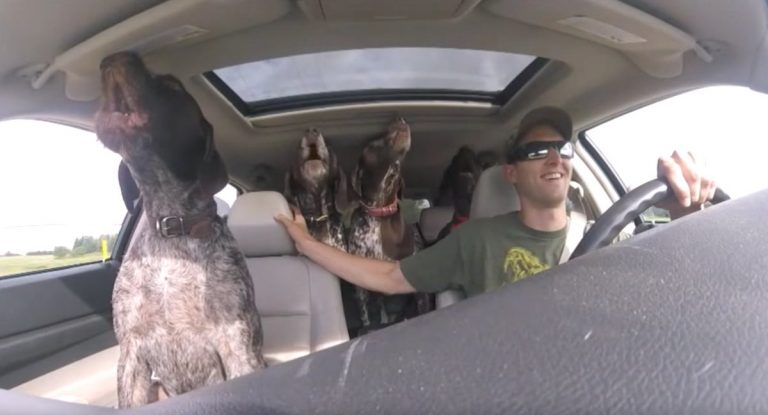Science Confirms Your Pooch Is Making “Puppy Dog Eyes” Just For You
Pet dogs communicate with specific facial expressions when their owners are looking at them, according to a new study, and not just because they’re excited about the possibility of food. Researchers found that dogs move their faces in direct response to the human gaze—usually producing so-called “puppy dog eyes”—even more than when they are presented with a treat.
“We can now be confident that the production of facial expressions made by dogs are dependent on the attention state of their audience and are not just a result of dogs being excited,” said coauthor on the study Juliane Kaminski of the University of Portsmouth, in a statement. She says this demonstrates that “dogs are sensitive to humans’ attention and that expressions are potentially active attempts to communicate, not simple emotional displays.”
This is certainly not the first study to find that animals are capable of producing facial expressions—most mammals can pull off something resembling a happy or sad face, but scientists generally assume that these are involuntary twitches rather than emotions. And we kind of know that too. When the family dog does that thing that looks exactly like smiling, we know that that’s just what happens when a dopey dog face pants after a good run.

But over the past few years, experts have slowly built the case that domesticated animals may actually use facial expressions to communicate with their human handlers. Using technology known as FACS (the Facial Action Coding System), researchers have catalogued facial expressions in macaques, dogs and, as of 2015, horses. We now know that humans have 27 distinct facial expressions, while chimpanzees can produce 13, horses can produce 17, and dogs can produce 16 (not bad, dogs). And, according to at least one study, horses can also read our facial expressions, and respond to angry faces differently than happy faces.
As for dogs, studies have inched toward the conclusion that dogs are smiling at us. One study found that dogs can be trained to identify human facial expressions even when presented with only part of a smiling or frowning face. Another found that dogs engage in the same social gazing behaviors as humans, scanning faces and eyes to determine intent and identify threats.
But until now, there was simply no evidence that dogs routinely make their own facial expressions in response to humans. So Kaminski and colleagues studied a small sample of 24 family dogs of various breeds, and filmed how each dog’s face responded as its owners faced it, offered it food, or looked away entirely. They then coded each facial expression with a modified dog version of FACS. They found that dogs produced more facial expressions when their owners were facing them than when they turned away or when food entered the picture.
There are many caveats to this study, including a small sample size and the looming question of whether these dogs produced facial expressions in response to human emotions or whether they have learned to make puppy dog eyes in response to the human gaze. But it is the closest scientists have come to demonstrating that your family pet is making faces at you.
“This study moves forward what we understand about dog cognition,” Kaminski said. “We now know dogs make more facial expressions when the human is paying attention.”
Original Source: https://www.fatherly.com/health-science/science-confirms-pooch-making-puppy-dog-eyes-just/
Publishing Information: 19 Oct, 2017 By Joshua A. Krisch





